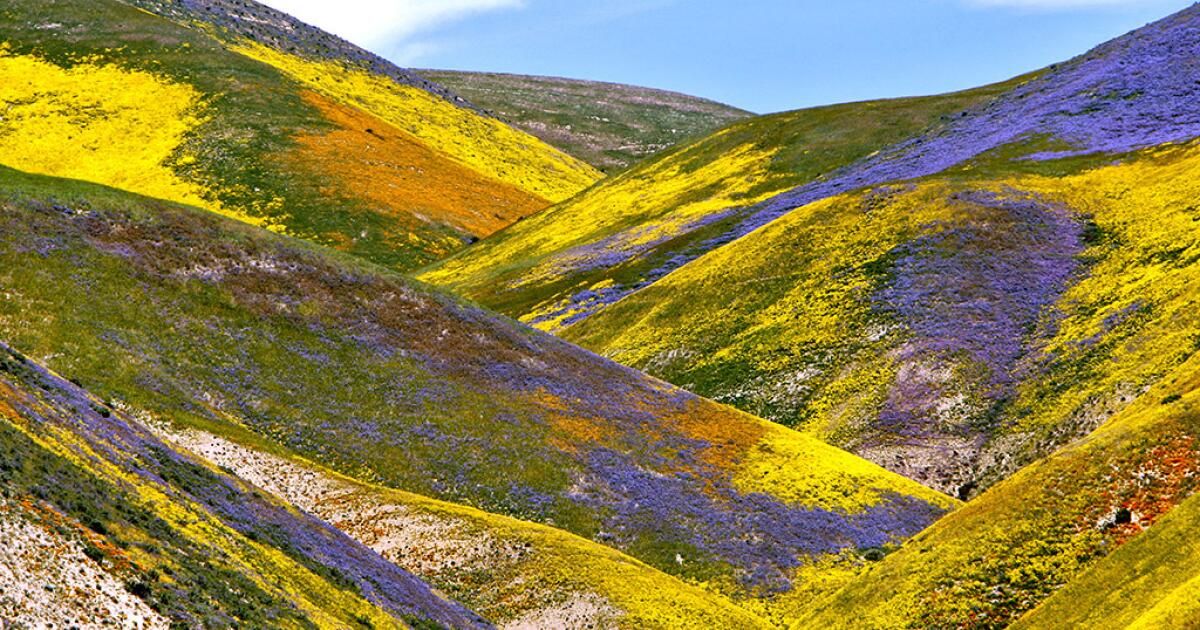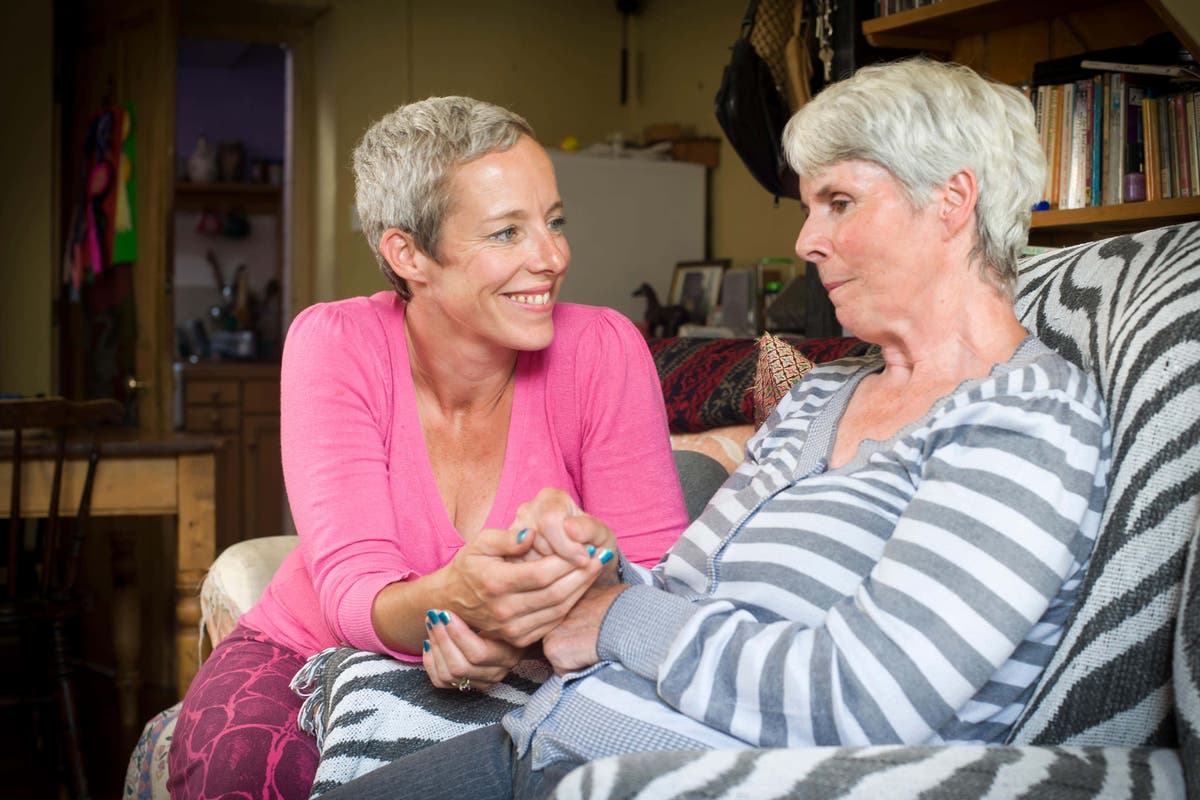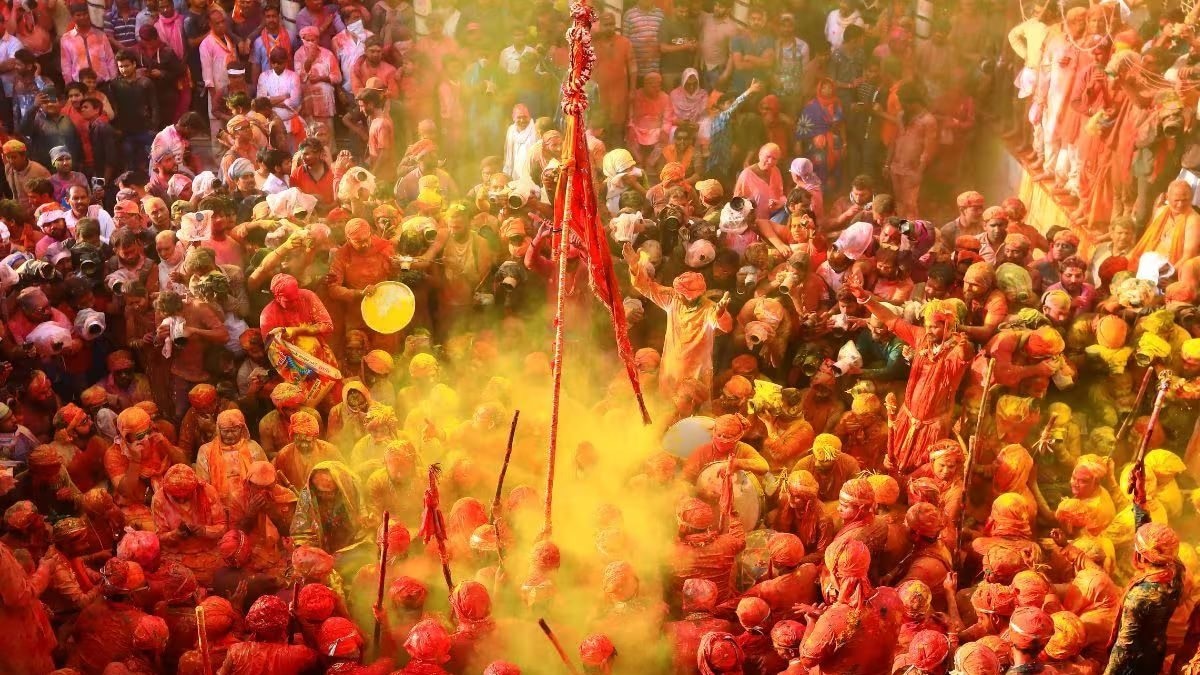When spring arrives in California, even after a little A little rain, people start asking big questions: When does the wildflower hotline start operating? Will there be a super bloom this year?
The first question is easy: The Theodore Payne Foundation's wildflower hotline resumes March 8 and is updated every Friday through June. You can access the information in three ways: as a telephone message by dialing (818) 768-1802 ext. 7, by subscribing to the podcast or simply reading the blog online.
The information is collected by botanist Lorrae Fuentes, who has assembled a network of botanical colleagues to report each week on their wildflower sightings in southern and central California, said Theodore Payne Foundation executive director Evan Meyer.
Fuentes writes the scripts, which are then narrated by Emmy Award-winning actor Joe Spano (famous for “Apollo 13,” “NCIS” and “Hill Street Blues,” to name a few), “a sweet, charming guy who does this ”. pro bono as a way to give back to the community,” Meyer said.
But will Fuentes and Spano report another year of great prosperity?
That remains to be seen, Meyer said, but he's optimistic.
Large, fragrant pod Ceanothus (Ceanothus megacarpus) are already blooming in the Santa Monica Mountains, he said, and other flowers are preparing to bloom as the weather warms, but popular viewing areas like the Carrizo Plain National Monument in central California are probably just a few steps away. a good month of revealing your show.
A slope in Walker Canyon covered in California poppies in 2019.
(Allen J. Schaben/Los Angeles Times)
Carrizo Plain is a particularly good place to see wildflowers, Meyer said, because it doesn't have the invasive black mustard plants (black brassica) and non-native grasses that can invade native flowers closer to Los Angeles. “It's a place to glimpse what California wildflowers were like 200 years ago.”
Fast-growing mustard plants have bright yellow flowers that may look pretty from a distance, he said, “but they are very destructive to the native ecology” and when they dry out later in the year, they become dangerous fuel for the forest fires. So much so that property managers are hiring goats to mow steep slopes.
Visitors are urged to never pick native wildflowers, so we can continue replenishing seedbeds, but invasive, non-native flowers like mustard are easy prey. The leaves of young plants. are Tasty in stir-fries and salads (outdoor educator Jason Wise offers many classes on invasive weed hunting, complete with recipes), and the flowers can make a beautiful fabric dye.
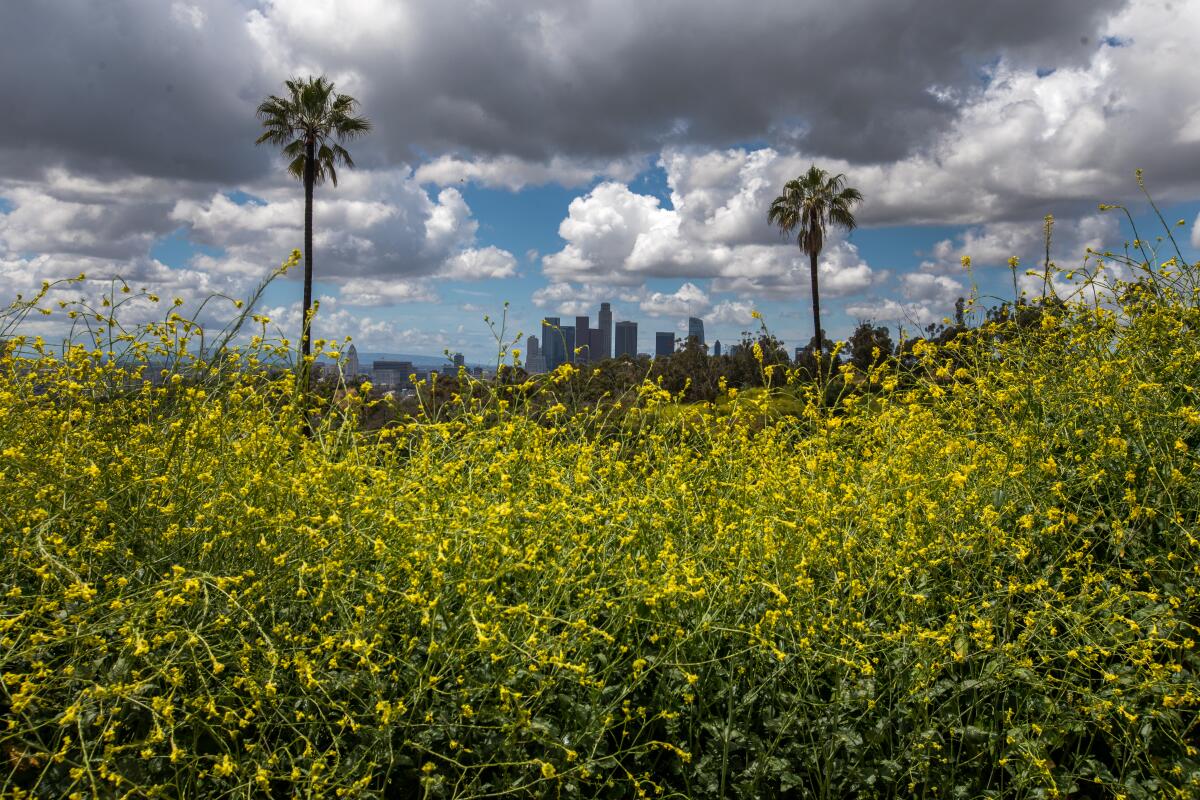
The bright yellow flowers of the non-native, invasive black mustard plant cover the hillside of the Elysian Park neighborhood in May 2023.
(Francine Orr / Los Angeles Times)
Native wildflowers vary depending on climate and elevation, Meyer said, and blooms last until August in the high mountains.
“This year we've had above-average rainfall, so the soil has stayed consistently moist, which is important,” he said. “And we had huge seed production last year, so it will be interesting to see what happens. “I think we will definitely see a lot of flowers this year.”
Which does not necessarily mean superflowering. Scientists tend to be careful when making predictions, but botanist Naomi Fraga, director of conservation programs at the California Botanical Garden, can't talk about one of her favorite topics without revealing a little excitement about what might be ahead. come.
The seed bank has been replenished, he said, but that doesn't mean those seeds will flower in 2024; Wildflower seeds can remain dormant for years before germinating.
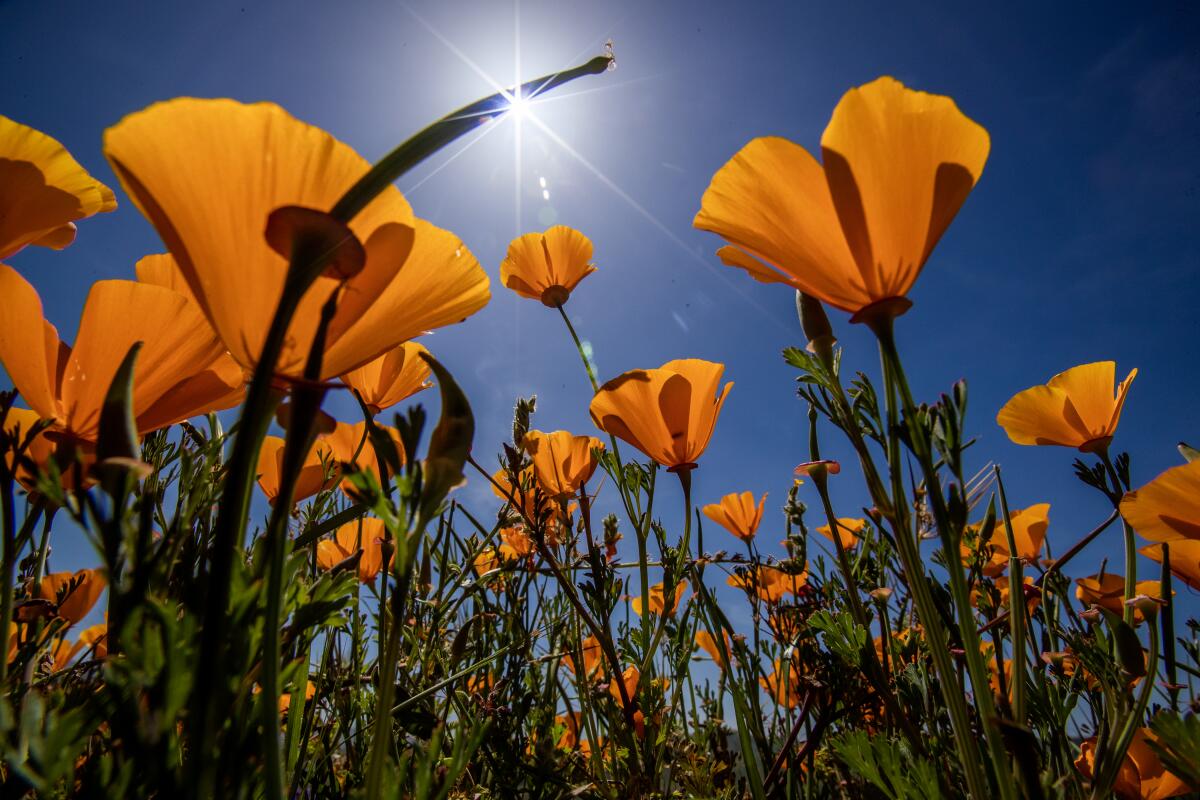
An ant view of California poppies.
(Allen J. Schaben/Los Angeles Times)
However, Fraga said, some impressive shows are already beginning in desert areas, fueled by heavy rains last August brought on by Tropical Storm Hilary. The Anza Borrego Foundation, for example, is already posting stunning photos of enormous wildflowers on its Instagram page.
That heavy August rain “prepared the soil to receive and retain new rain, so everything was absorbed very well when the winter rains came,” he said. “As long as conditions stay cool and don't increase too quickly in March to suddenly hit 90 degrees, I think we have a good chance of a bumper bloom in the Death Valley region.”
The hills around Los Angeles County are already turning green, he said, so they could have strong displays of lupins, salvias, phallias and, of course, the state flower, the vibrant orange California poppy (Eschscholzia californica), if native flowers are not outcompeted by invasive mustard and non-native grasses.
Whether it will be a super bloom, however, “I'll let the visitors judge,” Fraga said, “because of course all the flowers are great.”
There is no precise definition of superbloom, he said, “because it depends on the eye of the beholder. “To me, a super bloom is a very prolific bloom that covers a fairly large geography, where areas bloom en masse and not just in patches here and there.”
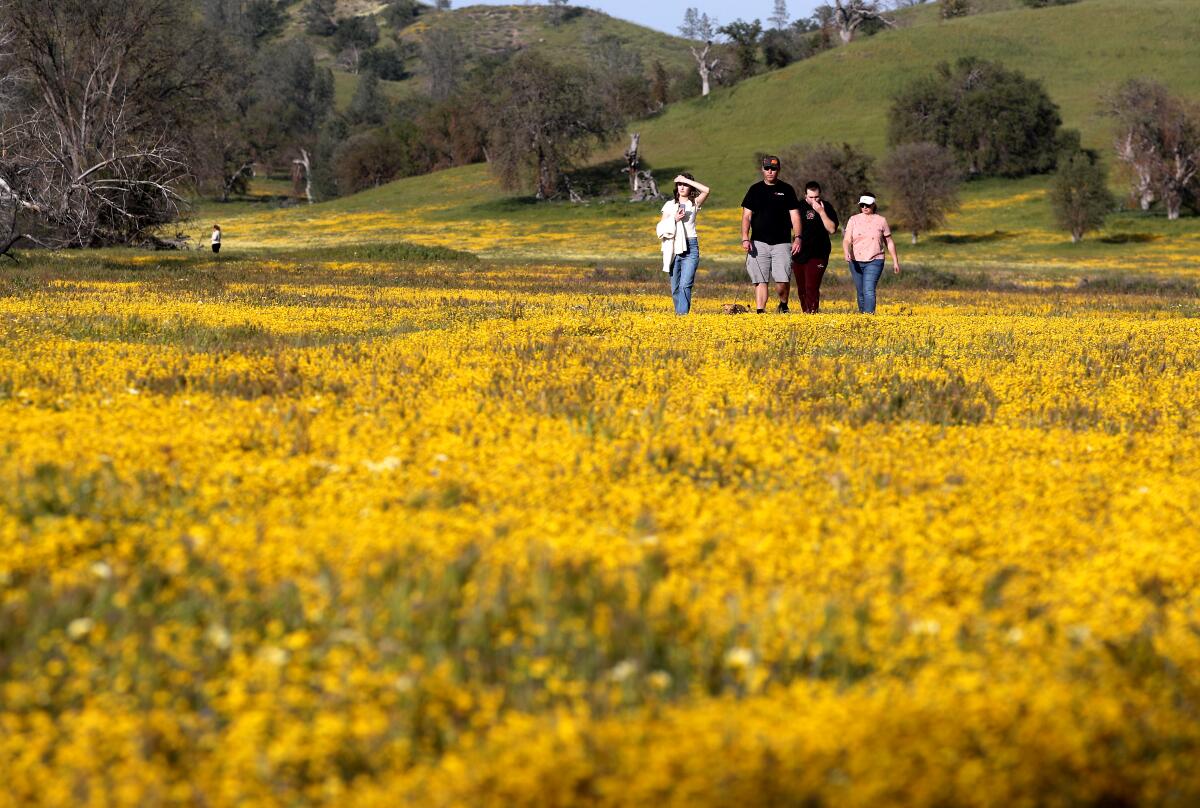
A meadow carpeted with wildflowers along a stretch of Highway 58 near Santa Margarita in April 2023.
(Luis Sinco/Los Angeles Times)
Those “pocket” flowers are still beautiful, Fraga said, but to her, super blooms are events that amaze even the experts.
“It is when botanists leave the field covered in pollen,” said Fraga. “Wherever you go you will see profusions, blankets of flowers for miles and miles. You see waves of pollinators like a painted lady. [butterfly] Migrations and sphinx moths. It's overwhelming because everything is so… alive.”
So is it pollen that drives us crazy for extraordinary wildflower displays? Or the thrill of seeing our normally tranquil hills streaked with bright colors, as fuzzy and vivid as a toddler's robe after an afternoon of finger painting?

Wildflower Details 2024
Where to Find Wildflower Information (and Great Photos)
“Flowers are definitely something easy to love…and people are drawn to colors because we just love a sight,” she said. “But for botanists, I think it's the fleeting nature of wildflowers. It's like you're in a race to see everything you can see, because you never know when you'll see it again. “It’s the same phenomenon as a big flash sale… it’s not available all year.”
The scavenger hunt aspect is appealing, Meyer said, but he also sees other factors, starting with the fact that humans are simply programmed to look for large-scale biological events, like fall colors in New England or bison roaming around. across the Great Plains.
“The blooming of wildflowers in California is one of the most impressive botanical events on the planet,” he said. “They're so vast and dense and abundant that they can be seen from space, so it's natural that people are drawn to that because it's so inspiring.”
That recognition is also in our DNA, he stated. “We evolved with plants and many California wildflower seeds are edible, like chia (Salvia columbariae), then the Native Americans would look at those fields and say, 'There's our food for the next few months.'”
But above all, Meyer sees the annual exhibitions “as a balm for our urban world of computers, highways and cubicles.”

A California poppy stands out amid a sea of deep purple wildflowers in Walker Canyon, Lake Elsinore, in 2019.
(Allen J. Schaben/Los Angeles Times)
“They allow us to connect with our optimism,” he said.
“It's like a metaphor for life; a reminder that good things await us. We may not see them, but the seeds are there, underground, ready to bloom in great abundance… so don't lose hope.”

